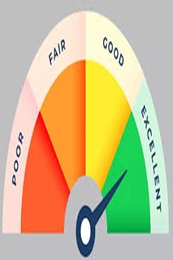Understanding Gold Loan Margin Call: What Borrowers Should Know
April 15, 2025

Gold loans are one of the most popular financing options in India, with the market growing to ₹7.1 lakh crore in 2024. These loans are quick to disburse, require minimal documentation, and use gold as collateral. However, a key concept every borrower should understand is the margin call in gold loans. This critical aspect ensures that lenders manage their risk effectively, especially during fluctuating gold prices. Let’s delve into what margin calls mean, how they work, and what borrowers should do when faced with one.
Understanding Gold Loan Margin Call – What is It?
A margin call in a gold loan occurs when the value of the gold pledged as collateral falls below a certain threshold due to fluctuations in market prices. Banks typically sanction loans based on the Loan-to-Value (LTV) ratio, which is capped at 75% by the Reserve Bank of India (RBI). If gold prices drop significantly, the pledged gold’s value may no longer sufficiently cover the loan amount, triggering a margin call.
In simple terms, a margin call is a request from the lender to the borrower to either:
- Repay a part of the loan to maintain the LTV ratio.
- Pledge additional gold to restore the collateral’s value.
Why Do Margin Calls Happen?
1. Gold Price Volatility
Gold prices are influenced by various factors such as international markets, geopolitical tensions, and inflation. In 2024, gold prices saw fluctuations between ₹56,000 to ₹63,000 per 10 grams, leading to an increase in margin calls.
2. High LTV Ratios
Borrowers often opt for the maximum LTV ratio to secure higher loan amounts. While this offers immediate financial relief, it also increases the likelihood of margin calls during price corrections.
3. Loan Tenure
Longer loan tenures expose borrowers to a greater risk of gold price volatility, making margin calls more probable.
What Should You Do During a Margin Call?
Facing a margin call can be stressful, but timely action can help you manage the situation effectively. Here’s what you can do:
- Understand the Notice: The bank will provide a clear notice detailing the shortfall in collateral value and the actions required. Read it carefully to understand the deadline and options.
- Make a Partial Payment: If you have funds, consider repaying a portion of the loan to restore the LTV ratio.
- Pledge Additional Gold: If you have more gold assets, pledging them can satisfy the margin call without reducing the loan amount.
- Negotiate with the Bank: In some cases, lenders may offer flexibility in timelines or other adjustments based on your financial situation.
Avoid Default: Ignoring a margin call can lead to default, resulting in the lender auctioning your pledged gold to recover the dues.
Impact of Ignoring Margin Calls
Failure to act on a margin call can have severe consequences, including:
- Gold Auction: Lenders have the right to auction the pledged gold to recover their dues.
- Credit Score Impact: A default on your gold loan can negatively affect your credit score, making it difficult to secure future loans.
Legal Action: Persistent defaults may lead to legal proceedings by the lender.
How to Minimise the Risk of Margin Calls
- Opt for a Lower LTV: While high LTV ratios are tempting, choosing a lower ratio provides a cushion against price fluctuations.
- Monitor Gold Prices: Keep an eye on gold market trends, especially during long loan tenures.
- Maintain Emergency Funds: Setting aside funds for unexpected situations like margin calls can prevent financial stress.
- Choose Reputable Lenders: Established lenders often have better customer service and provide more flexibility during financial challenges.
Final Thoughts
Understanding the concept of margin calls is crucial for anyone considering a gold loan. While these loans offer quick and easy financing, market volatility can lead to unexpected challenges. By opting for a prudent LTV ratio, monitoring gold prices, and acting swiftly during margin calls, you can safeguard your assets and maintain financial stability.
Get Gold Loans up to ₹25 lakh at attractive interest rates with Ujjivan Small Finance Bank. Enjoy quick disbursal and a stress-free loan journey. Apply now!
FAQs
1. What is a gold loan margin call?
A margin call in a gold loan is a request by the lender to the borrower to either repay part of the loan or pledge additional gold when the collateral’s value falls due to market fluctuations.
2. Why do gold loan margin calls happen?
Margin calls occur due to falling gold prices, high LTV ratios, or long loan tenures that expose borrowers to price volatility. Lenders use margin calls to manage their risk.
3. How is the LTV ratio calculated?
The Loan-to-Value (LTV) ratio is the loan amount sanctioned as a percentage of the pledged gold’s market value. In India, the RBI caps this at 75% for gold loans.
4. What happens if I ignore a margin call?
Ignoring a margin call can lead to the auction of your pledged gold, negatively affect your credit score, and may even result in legal action by the lender.
5. Can I avoid margin calls?
While margin calls can’t be entirely avoided, choosing a lower LTV ratio, monitoring gold prices, and maintaining emergency funds can reduce the risk.
6. What should I do if I receive a margin call?
You can either repay a part of the loan, pledge additional gold, or negotiate with the lender for an extension or alternative solution.
7. How long do I have to act on a margin call?
The timeframe varies by lender but is usually mentioned in the margin call notice. It’s advisable to act promptly to avoid further complications.
8. Does every gold loan have margin call risks?
Yes, every gold loan carries the risk of a margin call, but the likelihood depends on factors like gold price volatility, LTV ratio, and loan tenure.
9. Are margin calls common in India?
Margin calls are more frequent during periods of gold price volatility. In 2024, the increase in price fluctuations led to a higher incidence of margin calls.
10. Can I refinance my gold loan during a margin call?
Yes, refinancing your gold loan with another lender offering a lower LTV ratio or better terms is an option. However, ensure you understand the costs and terms before switching lenders.
Latest Blogs

Telangana Housing Board & KPHB Colony: A Guide to Affordable Urban Housing in Hyderabad
March 14, 2025
As Telangana continues its rapid urbanisation journey, two key housing entities—Telangana Housing Board (THB) and Kukatpally Housing Board Colony (KPHB)—have played critical roles in shaping the state's real estate ecosystem.

Does Checking CIBIL Score Frequently Lower Your Credit Points?
April 07, 2025
Imagine you're planning to apply for a home loan, a credit card, or even a car loan. Naturally, you want to ensure your CIBIL score is in good shape before proceeding.

Explained: Can NRIs Buy an Agricultural Land in India?
April 03, 2025
Real estate investment is often a top priority for Non-Resident Indians (NRIs) looking to retain strong financial ties to India.

How to Improve Your CIBIL Score from 600 to 750: A Step-by-Step Guide
April 02, 2025
Your CIBIL score is like your financial reputation—banks check it before approving loans or credit cards. If your score is hovering around 600, you might face difficulties in securing credit or may get loans with higher interest rates.

What Happens When You Leave Your Savings Account Unused?
April 01, 2025
Imagine waking up one day to find that your hard-earned money is locked away and inaccessible. Sounds stressful, right? This is precisely what happens when you leave your Savings Account inactive for too long.



